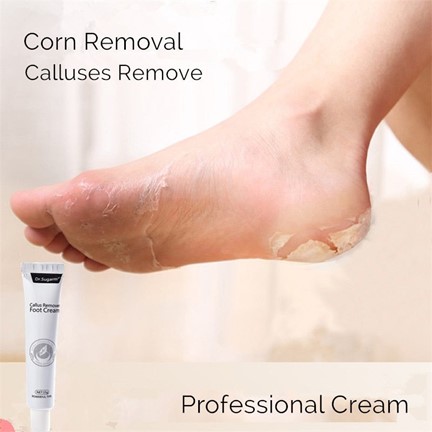A nurse is teaching an older adult client who has type 2 diabetes mellitus about how to care for corns and calluses on her toes.
Which of the following statements by the client indicates an understanding of the teaching?
"I should soak my feet in warm water daily to soften corns and calluses.".
"I can place an oval corn pad over toes that have corns as long as I remove the pad weekly.".
"I should use an over-the-counter liquid medication to remove corns.".
"I can apply lotion to soften calluses as long as I don't put lotion between my toes.".
The Correct Answer is D
“I can apply lotion to soften calluses as long as I don’t put lotion between my toes.” This is because moisturizing can help keep skin soft and prevent corns and calluses from forming.
However, it is important to avoid putting lotion between the toes as this can increase the risk of infection 1.

Choice A is wrong because soaking feet in warm water daily can soften corns and calluses, making it easier to remove the thickened skin 2.
Choice B is wrong because while using corn pads can help protect the area where corn has formed, it is important to follow the manufacturer’s instructions for use and removal.
Choice C is wrong because using over-the-counter liquid medication to remove corn is not recommended for people with diabetes.
Nursing Test Bank
Naxlex Comprehensive Predictor Exams
Related Questions
Correct Answer is A
Explanation
A full liquid diet includes all foods that are liquid or will turn to liquid at room temperature or melt at body temperature.
It gives you more nutrition than a clear liquid diet.
Plain yogurt is a food that can be included in a full-liquid diet.

Choice B is not the answer because oatmeal is not part of a full-liquid diet.
Choice C is not the answer because applesauce is not part of a full-liquid diet.
Choice D is not the answer because scrambled eggs are not part of a full-liquid diet.
Correct Answer is C
Explanation
The Weber test is a screening test for hearing performed with a tuning fork that can detect unilateral conductive hearing loss and unilateral sensorineural hearing loss.
To perform Weber’s test, strike the fork against your knee or elbow, then place the base of the fork in the midline, high on the patient’s forehead.

Choice A is wrong because delivering a series of high-pitched sounds at random intervals is not part of Weber’s test.
Choice B is wrong because holding an activated tuning fork against the client’s mastoid process is part of Rinne’s test, not Weber’s test.
Choice D is wrong because whispering a series of words softly into one ear is not part of Weber’s test.
Whether you are a student looking to ace your exams or a practicing nurse seeking to enhance your expertise , our nursing education contents will empower you with the confidence and competence to make a difference in the lives of patients and become a respected leader in the healthcare field.
Visit Naxlex, invest in your future and unlock endless possibilities with our unparalleled nursing education contents today
Report Wrong Answer on the Current Question
Do you disagree with the answer? If yes, what is your expected answer? Explain.
Kindly be descriptive with the issue you are facing.
